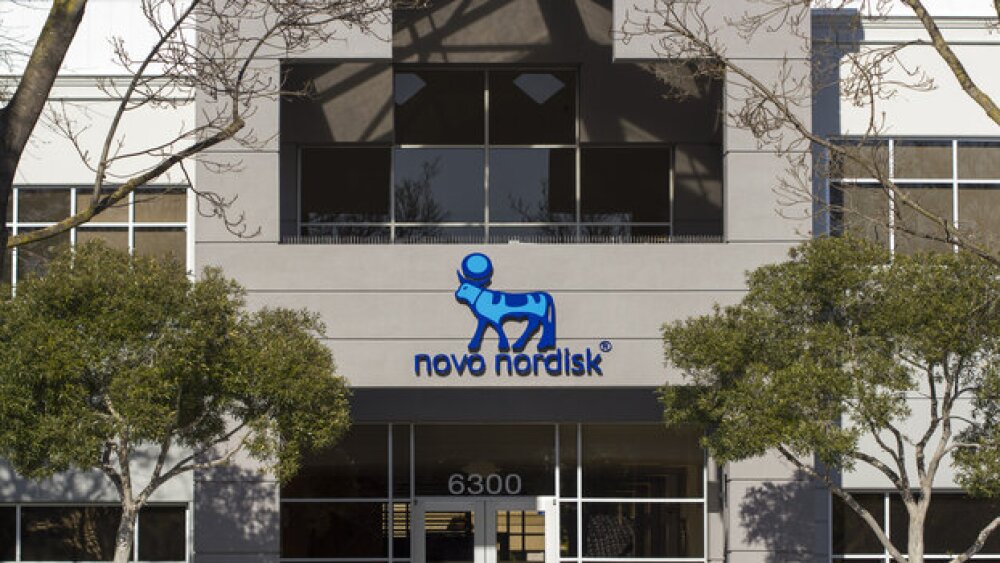Cidara Therapeutics is hoping that its novel approach to influenza will prevent future “twindemic” double threats like the one we may face this year.
Cidara Therapeutics is hoping that its novel approach to influenza will prevent future “twindemic” double threats like the one we may face this year.
With their proprietary Cloudbreak® antiviral platform, Cidara is developing long-acting therapeutics designed to improve the standard of care for patients with serious fungal or viral infections.
CD377 is their lead candidate for influenza prevention and treatment. Using antiviral conjugates (AVCs), it has the potential to provide near-immediate efficacy, along with universal long-term protection against all influenza strains.
With currently available flu vaccines, it takes the body up to two weeks to register immunity - leaving open a considerable window of vulnerability. Equally important to note is that it does not provide universal protection. This is partly due to the many strains of influenza, some of which operate concurrently as they did in 2019.
Neither a vaccine nor a monoclonal antibody, CD377 is different from a traditional therapeutic small molecule drug. The mechanism in Cidara’s Cloudbreak® antiviral platform is inspired by oncology bispecific immunotherapy.
“An antibody typically works by attaching to a disease pathogen using a Y-shaped antigen-binding (Fab) domain. The Fc Fragment, or the stalk, of the antibody draws in the natural immune response and kills the pathogen,” said Cidara President and CEO Jeff Stein. “What we’ve done is take off the arms. So CD377 combines the specificity and immediate potency of small molecule antivirals with the added immune response and long-term protection conferred by the Fc domain of a human antibody, thereby enabling universal influenza coverage.”
In preclinical studies, CD377 demonstrated a lower resistance potential compared to approved influenza treatments, Oseltamivir (Tamiflu) and Baloxavir marboxil (Xofluza), against a pandemic strain. It has even shown pre-clinical efficacy in immunocompromised models of influenza.
With these elements, CD377 could be a real game-changer during future flu seasons, especially ones where we face the dangerous double threat of a global pandemic like SARS Cov2 (aka COVID-19).
Dr. Allison McGeer is a Professor in Laboratory Medicine and Pathobiology at the University of Toronto’s Dalla Lana School of Public Health. McGeer ran the hospital piece of Toronto’s investigation into the 2003 SARS CoV1 pandemic and was part of the World Health Organization’s response to the 2013 MERS CoV outbreak. Recently called out of retirement to help in the “all hands on deck” response to COVID-19, McGeer discussed the limitations of current flu vaccines.
“Our problem with influenza vaccines at the moment is that they’re a lot better than nothing, but they’re really not great. So in the right virus and the right person, they are 60 or 70% effective, but they don’t work that well in older adults, people who are frail or who have underlying illnesses,” said McGeer. “If the new Cidara product is as good as it looks at the moment - fingers crossed - then we stand a chance of being able to give people one dose, maybe two doses per season, and eliminate institutional outbreaks.”
Cidara’s one-two punch approach also extends to targeting specific patient populations.
“We have two versions of our lead compound. One is designed to last 3-4 months, and the other is 4-6 months. And so those could be used in different settings because we designed them a little bit differently,” said Stein. “We modified that FC domain, engineered it so that the 3-4 month version has a more robust immune response. So that might be very useful in a treatment setting, in complicated patients, severely ill patients, and those who are that high-risk population, where you want to have a very robust immune response on top of the virucidal activity conferred by the front end of the molecule.”
Stein added that the longer-acting version may be more suited to the broader, healthy population who already possess a strong immune response.
Cidara is a member of The National Influenza Vaccine Modernization Strategy (NIVMS). A ten-year plan unveiled by The U.S. Department of Human Health Services (HHS) in June 2020, the coalition’s objectives are to strengthen and diversify influenza vaccine development, manufacturing and supply chain; promote innovative approaches and the use of new technologies to detect, prevent and respond to influenza, and; increase influenza vaccine access and coverage across all populations.
Cidara’s innovative approach could potentially overcome another barrier to the effective management of flu season: The reticence and apathy of the general public toward getting the current vaccine, largely due to skepticism about its effectiveness.
Dr. Michael Ison, Professor, Divisions of Infectious Diseases and Organ Transplantation at Northwestern University Feinberg School of Medicine, told BioSpace that CD377 could have even broader applications in the field of infectious disease treatment.
“Having an agent that could be delivered to patients, broadly active against all influenza viruses, and effective from day one, would be a huge advance,” Ison said. “It could be used in the setting of novel outbreaks, in populations that have low responses to vaccines and in patients where the consequences of influenza are very high. So they may get the vaccine and the Cidara agent as an add-on, to try to enhance their overall protection and prevent hospitalization and death.”
AVCs also have the potential to treat and prevent other life-threatening viruses, including RSV, HIV and coronavirus.
With CD377 still about a year away from entering Phase I, we are consigned to managing the present. When asked what our greatest challenge during this 2020-2021 flu season would be, McGeer painted an uncertain picture.
“When we have a bad flu season for a period of 3 or 4 weeks, it depends a little bit on what the supply of hospital beds is...but wherever you are, our hospital beds are always stretched at flu season,” said McGeer. “And in a really bad year some of our busiest hospitals convert offices to beds, so if you layer COVID on top of that, depending on how bad COVID is at the time, you’re that much closer to the edge in terms of hospital beds and ICU beds to be able to adequately care for people.”
For now, we all need to ensure we get the flu shot, and hope that novel approaches by companies like Cidara prove their effectiveness when SARS Cov3 rears its inevitable head.






